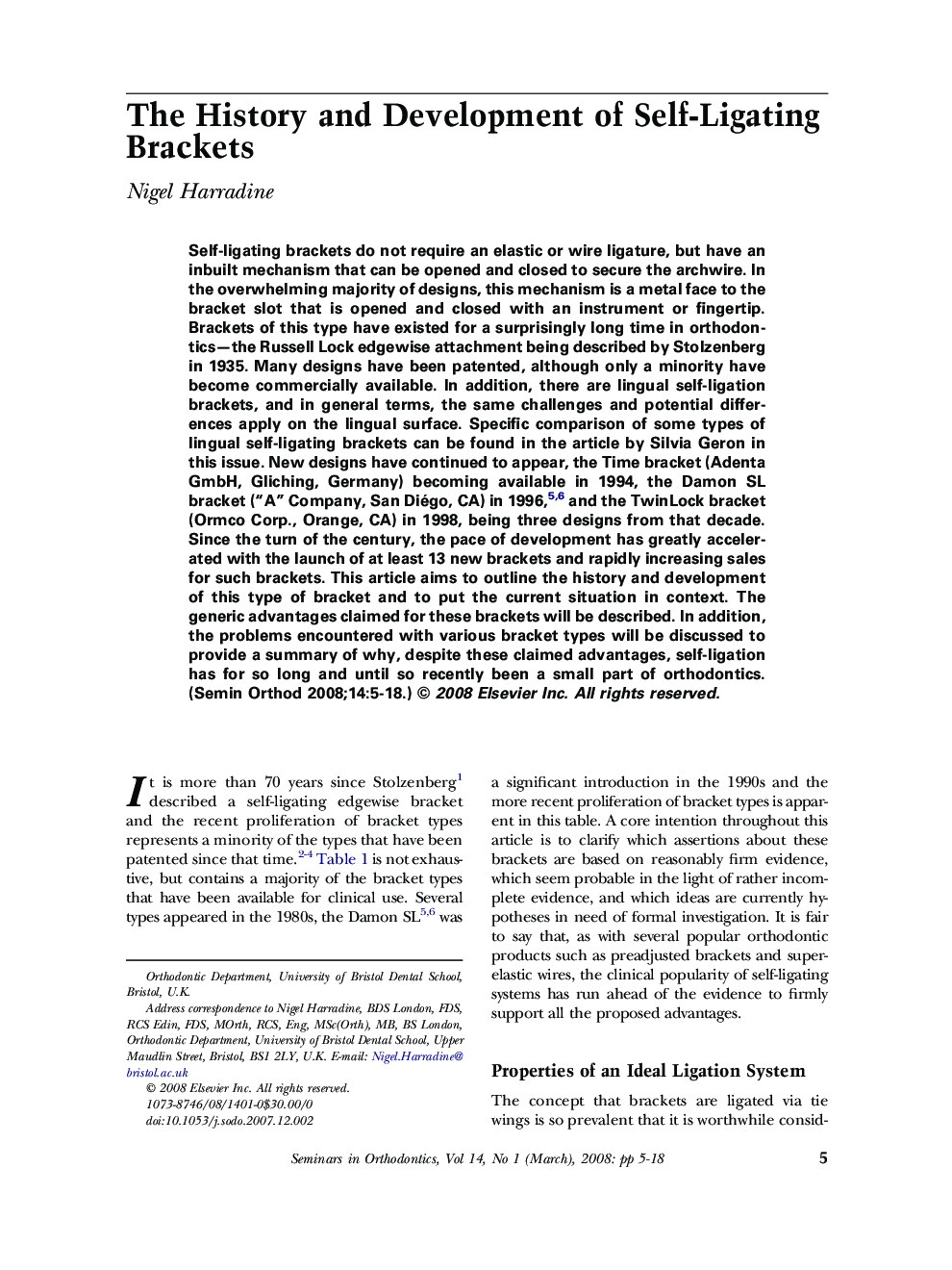| Article ID | Journal | Published Year | Pages | File Type |
|---|---|---|---|---|
| 3175740 | Seminars in Orthodontics | 2008 | 14 Pages |
Self-ligating brackets do not require an elastic or wire ligature, but have an inbuilt mechanism that can be opened and closed to secure the archwire. In the overwhelming majority of designs, this mechanism is a metal face to the bracket slot that is opened and closed with an instrument or fingertip. Brackets of this type have existed for a surprisingly long time in orthodontics—the Russell Lock edgewise attachment being described by Stolzenberg in 1935. Many designs have been patented, although only a minority have become commercially available. In addition, there are lingual self-ligation brackets, and in general terms, the same challenges and potential differences apply on the lingual surface. Specific comparison of some types of lingual self-ligating brackets can be found in the article by Silvia Geron in this issue. New designs have continued to appear, the Time bracket (Adenta GmbH, Gliching, Germany) becoming available in 1994, the Damon SL bracket (“A” Company, San Diégo, CA) in 1996,5 and 6 and the TwinLock bracket (Ormco Corp., Orange, CA) in 1998, being three designs from that decade. Since the turn of the century, the pace of development has greatly accelerated with the launch of at least 13 new brackets and rapidly increasing sales for such brackets. This article aims to outline the history and development of this type of bracket and to put the current situation in context. The generic advantages claimed for these brackets will be described. In addition, the problems encountered with various bracket types will be discussed to provide a summary of why, despite these claimed advantages, self-ligation has for so long and until so recently been a small part of orthodontics.
